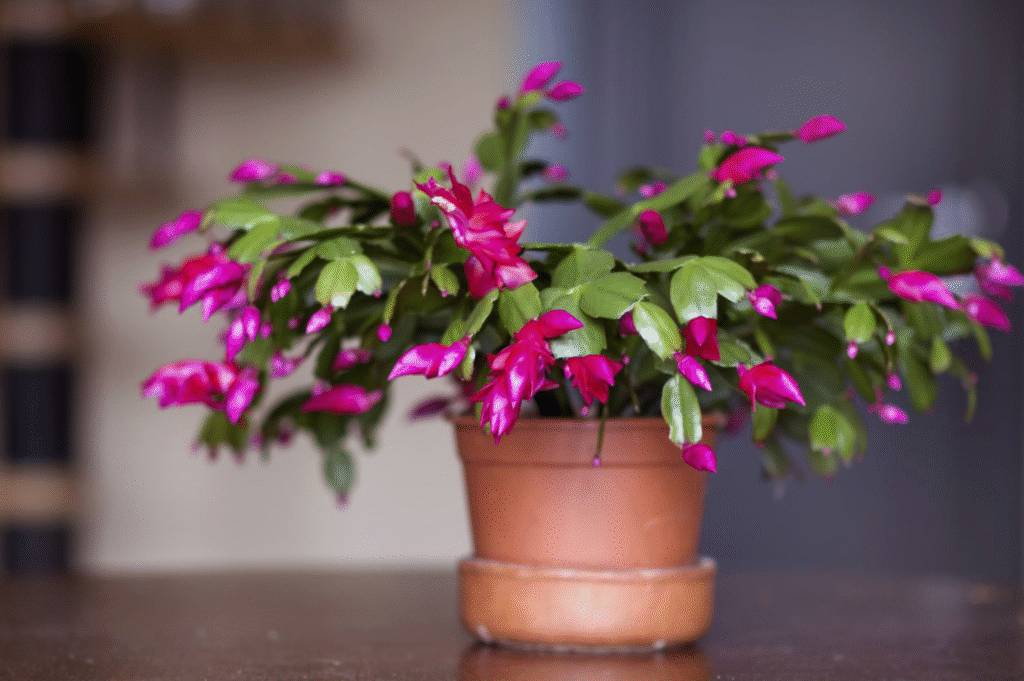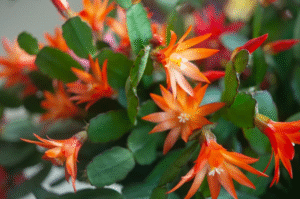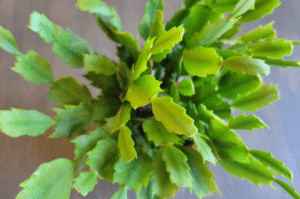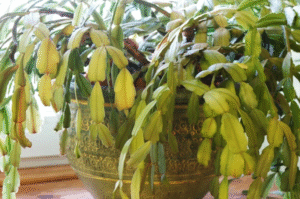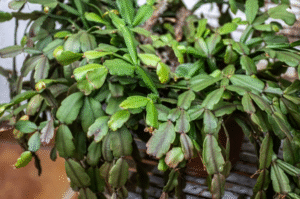If your Christmas cactus is looking crowded, growing slowly, or just not blooming like it used to, the timing might be right for a change, and by change, we mean repotting.
Repotting a Christmas cactus (Schlumbergera) is more than just placing it in a bigger pot. It’s about understanding the right season, signals, and soil conditions to give your plant the best chance to thrive again.
In this detailed guide, we’ll walk you through when to repot your Christmas cactus, signs it’s time, the best soil mix, and key mistakes to avoid.
What Is a Christmas Cactus?
Before jumping into repotting tips, let’s quickly define what makes the Christmas cactus unique. Unlike desert cacti, this plant is a tropical epiphyte. It grows naturally in humid forests of Brazil, attaching itself to trees rather than growing in soil. Because of this, it has special needs, especially when it comes to moisture and repotting.
When Is the Best Time to Repot a Christmas Cactus?
Ideal Time: Late Winter to Early Spring (After Blooming)
The best time to repot your Christmas cactus is after it finishes blooming, typically between late January and early April, depending on your region.
Why this timing?
Because during and just after blooming, the plant enters a rest phase. Repotting at this time avoids disturbing flower buds and supports healthy new growth in spring.
5 Clear Signs Your Christmas Cactus Needs Repotting
While timing matters, you also need to look out for physical signs that the plant is ready for a new home:
1. Roots Coming Out of the Drainage Holes
This is the most obvious sign that your cactus is root-bound.
2. Soil Dries Out Too Fast
If you’re watering more often than usual, the roots might have filled the pot.
3. Poor Growth or Fewer Blooms
Limited space can stress the plant, leading to stunted growth and fewer flowers.
4. Yellowing Leaves or Shriveling Segments
This could indicate nutrient deficiency or root stress.
5. The Plant Is Top-Heavy or Tilting
If it keeps falling over, the pot size or root balance is off.
How Often Should You Repot a Christmas Cactus?
Unlike fast-growing houseplants, the Christmas cactus is slow-growing and doesn’t require frequent repotting. Ideally, you should repot every 3 to 4 years, or sooner if you spot the warning signs mentioned above.
Pro Tip: A slightly root-bound Christmas cactus often blooms better than one with too much room.
Choosing the Right Pot and Soil
Best Pot Size:
- Choose a pot that is 1 to 2 inches larger in diameter than the current one.
- Always use a pot with drainage holes.
Best Pot Material:
- Terra cotta is great for airflow.
- Plastic pots retain more moisture (better for dry climates).
Ideal Soil Mix:
Christmas cacti need well-draining, slightly acidic soil. A commercial cactus or succulent mix is a great start, but for best results, mix your own:
- 2 parts peat moss or coco coir
- 1 part perlite
- 1 part orchid bark or sand
This combination mimics their natural habitat—light, airy, and moisture-retentive without being soggy.
Step-by-Step: How to Repot Your Christmas Cactus
Here’s how to do it safely:
1. Wait for the Right Time
Only repot when the plant is not actively blooming.
2. Gently Remove the Plant
Tip the pot and carefully slide the plant out. Tap the sides if it’s stuck.
3. Check the Roots
Trim any rotting or black roots with sterilized scissors.
4. Place in New Pot
Add a layer of soil mix, position the plant, then fill around it. Leave about an inch of space at the top.
5. Water Lightly
Let the plant settle for a few days before watering fully. Avoid fertilizing for at least 4–6 weeks.
Aftercare: What to Expect After Repotting
After repotting, your Christmas cactus may go into mild shock. This is normal.
Tips to Reduce Stress:
- Keep it in bright, indirect light
- Avoid direct sunlight for 1–2 weeks
- Maintain even moisture, but don’t overwater
- Be patient, growth should resume within 4-6 weeks
Common Mistakes to Avoid
Even experienced plant parents can make mistakes. Avoid these pitfalls:
- Repotting during the bloom cycle disrupts flowering
- Using regular potting soil – retains too much water
- Choosing a pot that’s too big leads to root rot
- Watering immediately after repotting – wait a few days!
Final Thoughts:
Repotting a Christmas cactus at the right time, usually after blooming in late winter or early spring, can significantly improve its health and flowering potential.
With a little attention to signs, timing, and soil, your plant will reward you with lush green pads and vibrant pink or red blooms year after year.
If you haven’t checked the roots in a while, maybe now’s the time to give your plant a fresh start.

